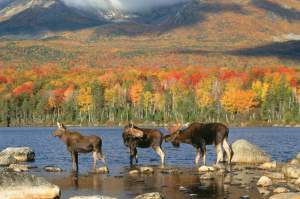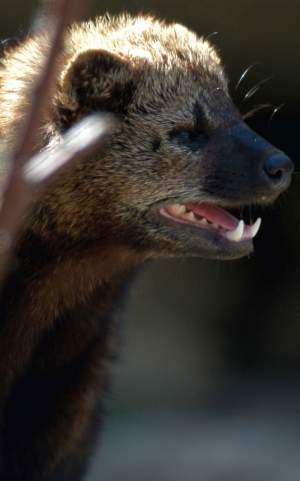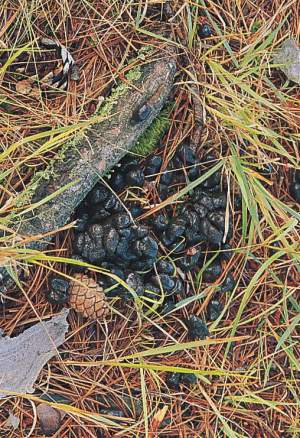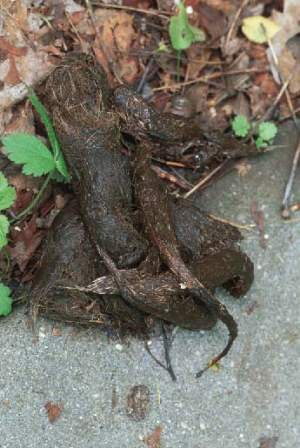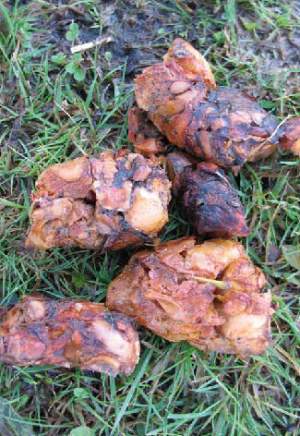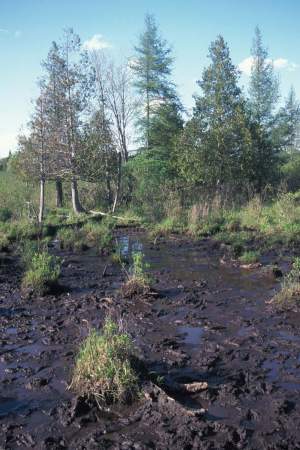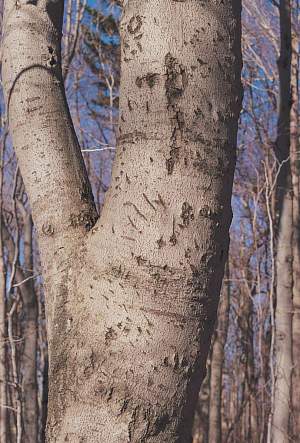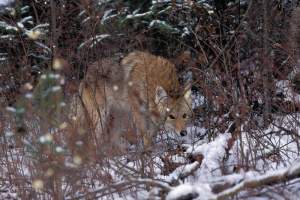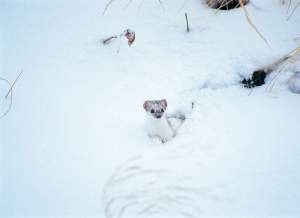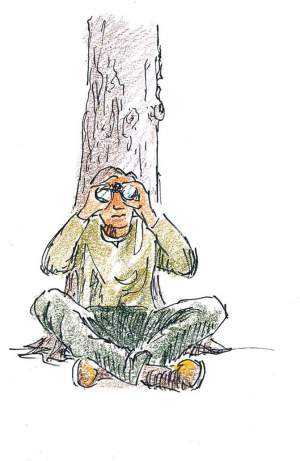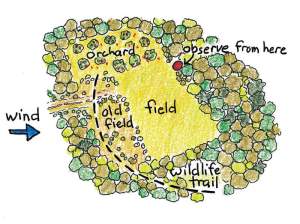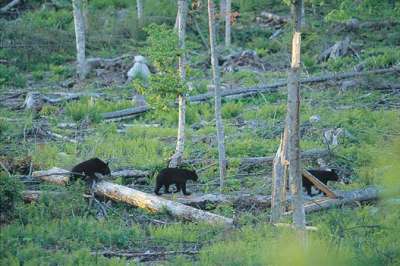
Aldo Leopold wrote, “There are some who can live without wild things, and some who cannot.” I am definitely among the latter. It refreshes my soul to see wild animals up close and at ease, in their native haunts. I have come to know the animals as my neighbors, not as things to be observed at a distance in a zoo, or on TV, but as individuals I’ve interacted with in their home, in the outdoors.
Many people nowadays do not know how, or are even afraid, to get close to wildlife. A little advice might give confidence to those of you who want to have memorable experiences with wild animals but may be unsure how to proceed. I am a hunter, and write from that perspective, but the same advice also applies for observing or photographing wildlife.
Over the years, I have had many exciting experiences with wildlife, not only with the game I’m hunting at the time but also with other animals that happen along. These encounters add welcome spice to the long, sometimes monotonous hours in the field. Whenever possible, I try to hunt in a place and a manner that will maximize my chances of seeing other animals in addition to those I’m hunting.
One intangible that I want to emphasize is that you have to “get into the woods” mentally as well as physically. Forget your everyday life, with its overwhelming complications and pressures. Expect it to take some time before you can truly feel a part of the natural world, but try to immerse yourself in the woods and let thousands of years of hunting instincts take over.
Although it is certainly possible to see animals while you’re walking through the woods, almost all of the close encounters I’ve had have been while I was sitting and waiting. This is by far the best way to observe and get very close to undisturbed wildlife.
There are a thousand variables that will determine whether you’ll see animals, not the least of which is luck. But there are some factors that you can control: location, time, and your own behavior.
Where To Go
When you have decided what species of wildlife you would like to see, you need to learn what habitats and food sources they prefer, and which are currently available. Concentrate your efforts on places where animals have access to those food sources. For example, a cornfield surrounded by an industrial park would probably not be a good place to observe bears. The field may have plenty of food, but it is inaccessible to bears, who generally won’t risk exposing themselves in such an environment. On the other hand, after the corn is cut, it may be great for geese.
The main concerns for all wildlife are food, shelter, and water. Access to all or some of these three necessities will be poor or lacking over most of a given forest. In order to have a realistic chance of seeing wildlife, you need to find areas that concentrate these factors, such as an old apple orchard (food) near a swamp (water and shelter). A concentration of oak trees with a crop of acorns near a logged-over area that is thick with brush combines food and shelter and will draw many different animals in the fall.
When To Go
Once you’ve found a likely spot, scout it. By this, I mean go into the area during a time when your target animal will probably not be there. You need to look over the lay of the land and figure out exact spots where you can wait. Try to find a comfortable spot, preferably where you can sit up against a tree. The right tree (rarer than you might think, as you’ll discover) will make your stay more comfortable, help you to sit still by bracing you, and break up your human outline. Sit where you can see the food source or a trail to it, but not too close. I like to sit 20 or 30 yards from an apple tree, for instance.
It’s very important that the chosen spot be downwind from where you expect the animal to be. Most mammals, including bear, deer, moose, and wild dogs (wolves, coyotes, foxes), have an excellent sense of smell and depend upon it to sense danger. A deer, for instance, will be put on alert but might not immediately flee at the sight of you, especially if you’re motionless. If it catches a whiff of your scent, however, the game is up. They trust their noses.
Scouting at mid-day will allow time for your scent to disperse before evening, and will cause the least disturbance to the animals. Don’t try to sneak while scouting. Animals can tell when a person is hunting versus just walking through the woods. To varying degrees, most animals will become more cautious if they think they’re being hunted. So don’t act like a hunter while scouting.
You are not likely to see much wildlife while scouting in this way, or if you do, it will only be a fleeting glimpse. At this point, you’re not looking for the animal, but rather evidence of its presence. Look for fresh tracks, droppings, broken branches, scratches on trees, and other signs of recent activity. You don’t need to be Daniel Boone, but you do need to know some of the signs left by different animals. A good beginning would be the various field guides, or you might want to take a tracking course.
Have several spots scouted that you can alternate between. You will need at least a couple of different spots anyway, depending on which way the wind is blowing on a given day. After you’ve found several spots with plenty of sign, you need to decide when to go in and wait. Early mornings and evenings until dark are generally the best times to see the most wildlife.
How To Go
Determining where and when to go are the first steps, but you need to move in a manner that will allow you to blend into the woods. When you go into the woods to wait, you need to be as quiet as possible entering your chosen area. Come in downwind from where you think the animal might approach. Try to avoid paths or trails that they might use and get there at least two hours before prime movement time so your scent will dissipate somewhat. The animals will still be able to smell your tracks but will probably not be unduly alarmed if the tracks are several hours old. Don’t keep going to the same spot for more than two or three days. Animals will begin to detect a pattern of your presence and will avoid the area while you are there.
Be aware of ground conditions. Are the leaves you’ll be walking on damp and quiet, or dry and crispy? If conditions are noisy, don’t despair, because animals make noise, too. One trick you can use is to make your approach sound like that of an undisturbed animal walking through the woods, by walking in an uneven pattern and pausing often, as if you were feeding. Noisy conditions can be an advantage when you’re sitting. You’ll be able to hear animals coming and get ready with a gun or camera long before they’re in sight. Since I am primarily a stand-hunter (which means I sit on the ground, or in a tree seat), I like to hunt primarily with my ears. This allows me to sit perfectly still. If I hear something coming, I can get positioned before it has a chance to see me. If ground conditions are very quiet, such as wet, soft leaves or wet snow, then turning your head periodically to look around is unavoidable. When you do this, you run the risk that an animal that has approached silently will see you move and be put on alert.
When I say “sit perfectly still,” that’s what I mean. Look at a rock or stump in front of you. When that rock or stump moves, then you can. A tiny movement can mean the difference between getting a good long look and just glimpsing the south end of a northbound animal. After you gain some experience, you get a feel for when you can move (and how to move) and when you can’t, but moving always means taking a chance of spooking wildlife.
The idea is to become as much a part of the woods as possible. Wear drab clothes (except during deer season, when it is a good idea to wear fluorescent orange). Camouflage is helpful but not necessary. Most mammals are at least partially color blind, although most birds are not. Wear clothes that are quiet when moving through brush. What may seem quiet in the house can sound like fingernails on a chalkboard in the woods. Wool and fleece are good quiet materials.
It may take days, or weeks, but eventually, if you are patient, you will find yourself in close proximity to a wild animal that is unaware of your presence. If you’re hunting, and it’s the game you’re after, you would probably take the first safe shot you have. If you’re not hunting or if the animal is not the game you’re after, then you’ll have the special privilege of observing the natural behavior of a wild animal that is completely at ease.
Talking To Animals
Usually, I can’t resist interacting with the animal, trying to get it to come closer. I’ll make sounds that will appeal to its hunger, curiosity, or urge to breed or defend territory. If I see a bull moose, I might grunt or make a cow call (kind of a long moan with a grunt at the end). I’ll lip squeak (like a series of kissing sounds, to try to sound like a mouse) to a fox, coyote, hawk, owl, bobcat, fisher, or other predator. Sounding like prey in distress rings the dinner bell for predators, but these same sounds can also attract unlikely animals, such as the chickadee that perched on my gun barrel as I was using a predator call, which sounds like a cottontail rabbit in distress. Imitating a barred owl in the spring, or a moose in the fall, can arouse territorial or mating urges. There are legions of hunters, who each spring try to sound like a hen turkey, hoping to attract the attention of a love-sick gobbler.
There are hundreds of commercially made calling devices on the market today that can make just about any sound conceivable. These calls are readily available at sporting goods stores, but if you can manage it, it’s a lot more fun to learn to call animals with your own voice.
Here’s a warning. Be aware that if you attempt to call in an animal, it might get very close, very quickly. You might want to think twice before calling a thousand-pound rutting bull moose in too close. Whether it’s too close depends on what you’re comfortable with, but depending on circumstances, you could get hurt, so use some common sense. Remember, the animal you’re calling doesn’t realize that you’re a human, which it would normally run away from. So be careful, but you don’t need to be afraid either. If something is getting closer than you like, just speak to it in a normal tone of voice. Once it realizes you are a human, it should move away.
Expect there to be other people in the woods with you. If you’re making sounds like an animal during hunting season, another person could mistake you for that animal. This can be a dangerous situation. If you think this is happening, speak up loudly and let the hunter know you’re not an animal. Be respectful of others. If someone is in an area before you, go somewhere else. If you come across a hunter in the woods, circle far around him or her. The last thing they need is for you to scare game away from their stand.
Over the years, I’ve called in foxes, coyotes, owls, fishers, a bear, a moose, and a weasel, along with a few curious chickadees. One of my most exciting evenings, while I was bear hunting, I called in six different coyotes. At one point, there were three of them within four feet of me at the same time, and two of them came within six inches of me. This is no exaggeration – I was sitting on the ground, perfectly motionless, and the coyotes were pups of the year, about six months old, so they were quite naïve. They probably hadn’t yet had any bad experiences with a human. When they got close, they saw me and jumped back, but then moved around behind me to get downwind. They actually moved around downwind of me for quite some time before leaving. I initially attracted them with squeaking sounds, but once they realized I wasn’t a mouse, being youngsters, they became curious. Their parents, who were nearby (I heard them howling) did not fall for it. Another evening I was privileged to have a female bear and her two cubs spend 45 minutes within 35 yards of me while I was sitting quietly (no calling), watching some apple trees (I was bear hunting, but I don’t shoot mothers with cubs).
Although I am a hunter and definitely like to take home some game to eat, these bonus encounters with wildlife are some of my most treasured memories. If you take the time to learn how and just keep on getting out there, you can have these same kinds of experiences.
Tips for Seeing Animals:
- Get into an outdoors frame of mind
- Learn about the habitat needs of different species
- Scout at mid-day for likely places
- Don’t bother being stealthy when you’re scouting
- Sit still in early morning and evening with your back against a tree
- Choose a spot near food sources but downwind of them
- Wear quiet clothing


